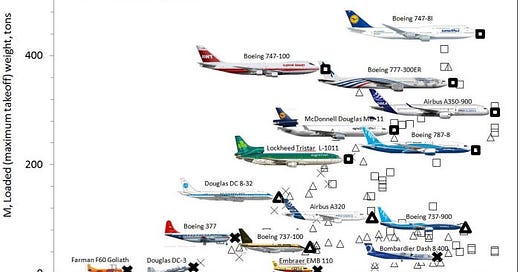The evolution of airplanes
The prevailing view is that we cannot witness biological evolution because it occurred on a time scale immensely greater than our lifetime. Here, we show that we can witness evolution in our lifetime by watching the evolution of the flying human-and-machine species: the airplane.
We document this evolution, and we also predict it based on physics principles. We show that the airplanes must obey theoretical allometric rules that unite them with the birds and other animals. For example, the larger airplanes are faster, more efficient as vehicles, and have greater range.
The engine mass is proportional to the body size: this scaling is analogous to animal design, where the mass of the motive organs (muscle, heart, lung) is proportional to the body size. Large or small, airplanes exhibit a proportionality between wing span and fuselage length, and between fuel load and body size. The animal-design counterparts of these features are evident. The view that emerges is that the evolution phenomenon is broader than biological evolution. The evolution of technology, river basins, and animal design is one phenomenon, and it belongs in physics.
A. Bejan, J. D. Charles, and S. Lorente, The evolution of airplanes, Journal of applied Physics, 116.
A. Bejan, Go with the flow and you’ll find evolution belongs to physics, theconversation.com




